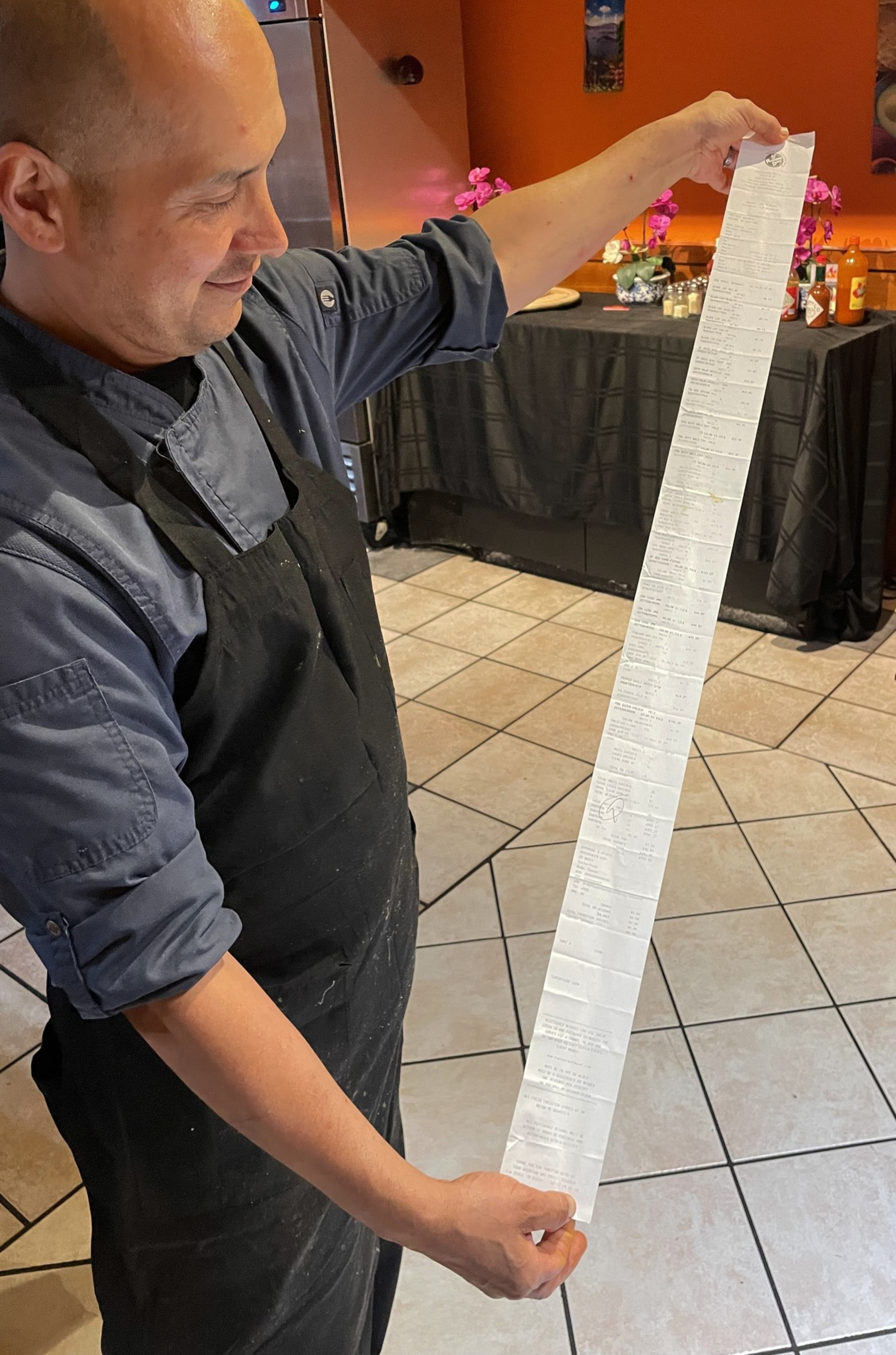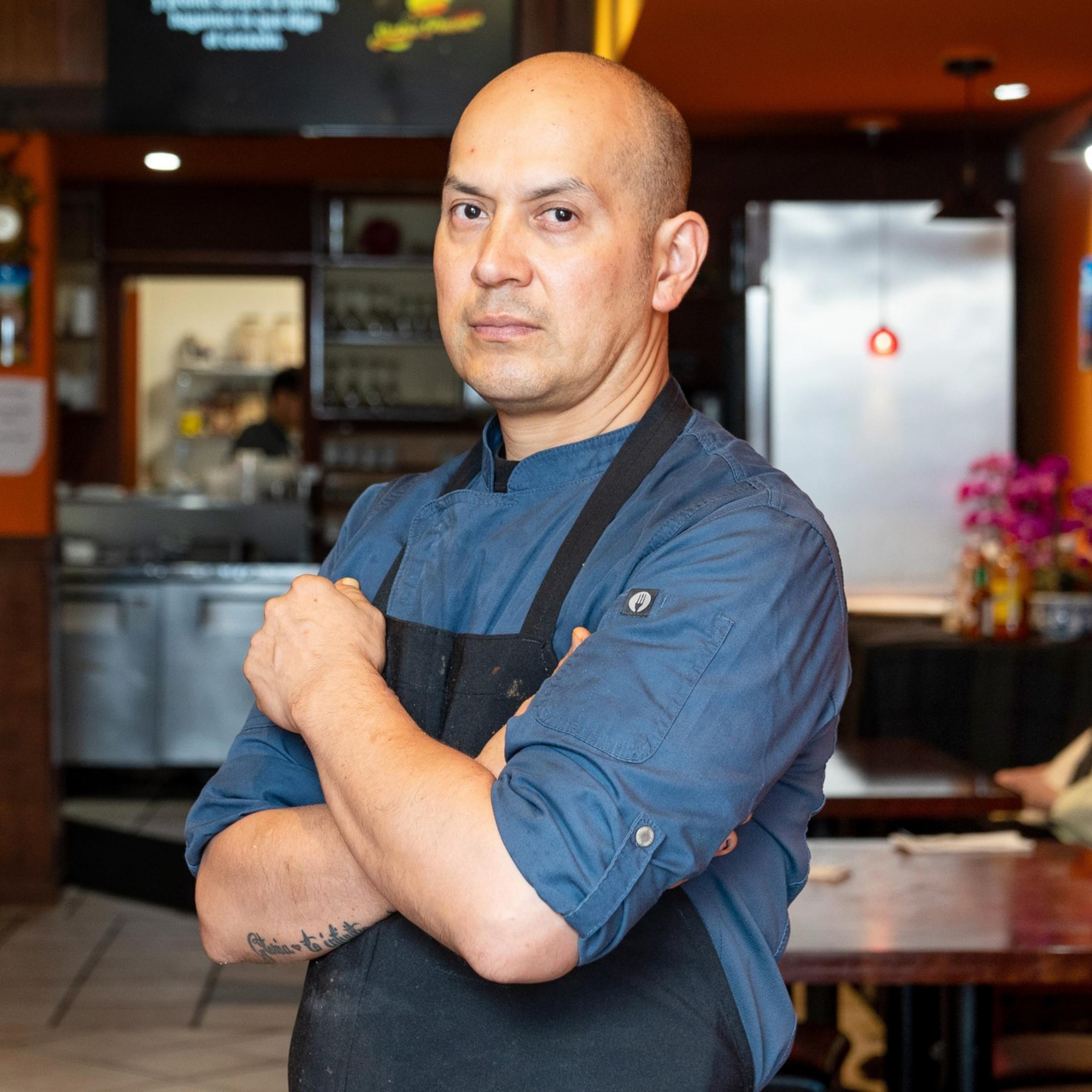There were no free tables at Caliente Bistro Kitchen on a recent weeknight, but chef-owner Raul Garcia-Antolin couldn’t help but feel it was all about to go belly-up.
Garcia-Antolin, 50, owes $42,886 in back rent, and he’s not sure he’ll make the next $5,747 rent bill either.
The Richmond district restaurant owner said he hasn’t paid his landlord since November because he is spending more than he’s taking in to operate the business.
Gross revenue during the period has been $700-$1,000 a day, he said. But with the rising costs of meat and produce, it takes $1,200 just to break even. He has looked into getting a loan in order to stay afloat but doesn’t qualify because his bank account balance is too low.
“I’ve gone through my life savings,” Garcia-Antolin said. “I’m ready for Chapter 7, Chapter 13 [bankruptcy].”

Garcia-Antolin’s financial struggles are a window into what many San Francisco restaurants face as labor (opens in new tab), utilities (opens in new tab) and food costs have increased. The rising cost of doing business has led some restaurants to raise prices even as customers tighten their purse strings (opens in new tab).
The Standard reviewed notes from Garcia-Antolin’s landlord to verify the amount he owes, as well as the restaurant’s transaction reports to see how much is coming in.
While business started to pick back up two weeks ago, upswings are fickle. If the momentum doesn’t continue, Garcia-Antolin said, he’ll be forced to close his doors Sept. 1.
‘This is a gem’
Since opening in May 2021, Caliente has gotten rave reviews, averaging 4.8 stars (opens in new tab) on Yelp. In April, KRON4 recognized it as one of the top five (opens in new tab) spots for a burrito in San Francisco.
When The Standard visited on a recent Wednesday, customers had nothing but good things to say about the food — and the generous portions.
“It’s fucking good,” said Sarah Alexander, 71, who was visiting from Greeley Hill near Yosemite. “This is a gem, from the salsas to the dishes.”

Alexander said her $15 chicken mole plate was fairly priced for the size. “In Modesto, we’d probably have to pay $20 for this, and it wouldn’t be as good,” she said.
Kamilah Jeffrey, 39, who lives a few blocks away, said she eats at Caliente three times a week. The carne asada tacos are her favorite.
But the food customers love is the main cause of Garcia-Antolin’s financial woes. Latin cuisine is meat-centric, he said, and meat prices have skyrocketed.
“Mexican food is the worst food to be selling right now,” Garcia-Antolin said. “Steak is $5 a pound for tacos.”
Just over a year ago, beef was $3.80 a pound, and chicken legs were 69 cents. A receipt from Wednesday showed he paid $5.15 a pound for diced beef and $1.12 a pound for chicken legs from Restaurant Depot on Evans Avenue.
But it’s not just the cost of meat that’s gone up. A 30-pound case of Roma tomatoes that was $10 just over a year ago is now $35, according to the restaurant owner. Last year, he paid $16 for a 50-pound bag of red onions; now he’s paying $22 for just 15 pounds.
Laurie Thomas, head of the Golden Gate Restaurant Association, said food prices are up 30% to 40% since the pandemic. Utilities like garbage pick-up and water bills have also gone up, she said.
Thomas, who owns restaurants Rose’s Café and Terzo, said her Recology bill has increased by roughly 10% since January 2023. Her water bill has gone up by 20% over the past year.

Thomas added that the pain can be acutely felt by restaurants during the early summer, when residents leave town for vacation.
“You have a double whammy of rising costs and lower sales,” Thomas said. “A lot of people have been raising costs over the last six to 12 months. Otherwise, you lose money.”
After learning about Caliente’s financial problems and potential closure, some customers suggested that Garcia-Antolin charge more or reduce portion sizes.
“For the ceviche, you guys could cut back the portion amount by like half,” Outer Richmond resident Tony Wong told Garcia-Antonlin.
Wong also suggested that he raise prices by 10%.
But Garcia-Antolin said the restaurant is known for large portions, as shown on its Instagram page (opens in new tab). He’s worried he would lose customers if he charged more or served less.
“That’s one of the reasons people come here,” he said. “People see these big plates of food on social media, and if they come in and they get some tiny thing, they’ll be like, ‘That’s not what I came for.’ ”
Social media marketing is especially important for the restaurant, Garcia-Antolin said, since Caliente is on a part of Geary Boulevard where foot traffic is low.
“We’re isolated,” he said.

Garcia-Antolin said he has tried to get loans to cover the back rent but hasn’t been able to meet a requirement to keep his bank balance above $2,000. His landlord hasn’t charged him interest or threatened to evict him but hasn’t offered to forgive what he owes either, he said.
There is some hope, however: sales have increased in the last two weeks, he noted. While he had been getting 40-60 customers a day, he’s now getting 100-150 and averaging $2,200 in daily revenue. Sometimes he does even better.
A point-of-sale report reviewed by The Standard showed Caliente netted $3,200 on Thursday. If business keeps pace for the next five weeks, he said, he’ll be back in the black. That gets him to the end of August.

